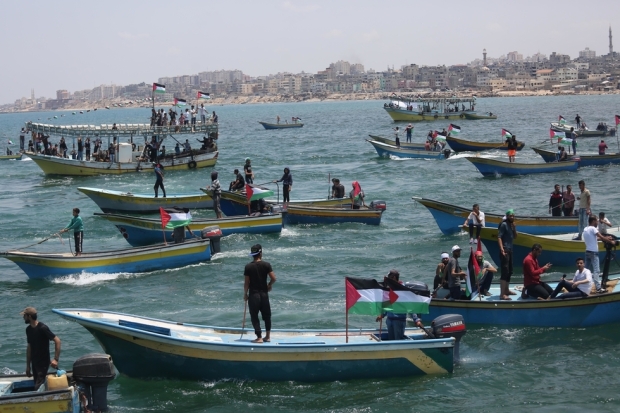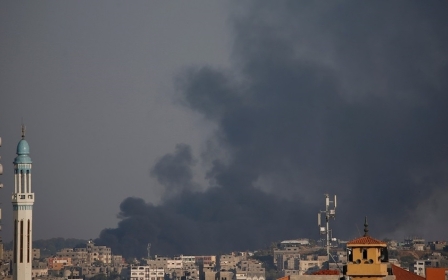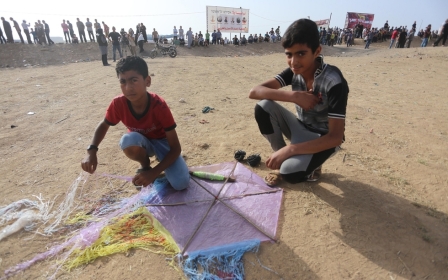Gaza violence calms after overnight air strikes

Gaza's streets were filled with morning shoppers and children went to class, and schools opened as usual in Israeli towns near the border a day after the worst flare-up in violence since the 2014 Gaza war.
Late on Tuesday, Islamic Jihad and Hamas said they had agreed to a ceasefire, and vowed to stop firing mortars and rockets if Israel also halted its bombardment of the Gaza Strip.
Early on Wednesday, Israel reportedly hit 25 Hamas targets on the Gaza Strip. Israeli ministers have made contradictory statements about the ceasefire, and the security cabinet is scheduled to convene on Wednesday night to discuss the situation.
But there have been no reports of further fighting as both sides appeared to back away from a slide towards a new war after weeks of violence along the border.
On Tuesday, Israel struck more than 60 military targets in the coastal enclave, with some 70 rockets and mortars fired from the territory throughout the day.
The violence followed weeks of deadly unrest along the border between Israel and the blockaded Palestinian enclave.
On Wednesday, a Palestinian shot by Israeli forces during recent protests on the border died of his wounds, according to the Palestinian health ministry.
Hamas' deputy chief in Gaza, Khalil al-Hayya, said Egyptian mediation led to the ceasefire, but the terms of the "understanding" did not go beyond "a restoration of calm by both sides".
"After the resistance succeeded in confronting the (Israeli) aggression ... there was a lot of mediation in the past hours," al-Hayya said late on Tuesday.
"An agreement was reached to return to the (2014) ceasefire understandings in the Gaza Strip. The resistance factions will abide by it as long as the Occupation does the same," he said in a statement, using militant groups' term for Israel.
The latest escalation of fighting between Israel and Palestinian Hamas has pushed Gaza to the brink of war, the UN envoy for the Middle East warned the Security Council on Wednesday.
Nickolay Mladenov delivered the stark warning as the council remained deadlocked over how to respond to the flare-up between Palestinian militants in the Gaza Strip and Israel.
"This latest round of attacks is a warning to all of how close to the brink of war we are every day," said Mladenov, who spoke via video link from Jerusalem.
Weeks of protests
Tuesday's incidents took place as a flotilla set sail from the Gaza Strip and attempted to break the siege on the area.
Passengers from one of the leading flotilla boats were arrested and escorted to the Israeli port of Ashdod.
Protesters have demanded that Palestinians who were expelled in the 1948 war amid Israel's creation be allowed to return to their former homes, now inside Israel.
They peaked on 14 May, when at least 61 Palestinians were killed in clashes as tens of thousands of Gazans protested the US transfer of its embassy in Israel from Tel Aviv to Jerusalem the same day.
Low-level demonstrations and clashes have continued ever since.
At least 121 Palestinians have been killed by Israeli fire. No Israelis have been killed.
Israel says its actions are necessary to defend its borders, accusing Hamas of encouraging thousands of Palestinians to break through the border and attack Israelis.
But Israel has faced international criticism and calls for an independent investigation over its use of live fire during the protests and border clashes.
The Gaza Strip has been under Israeli blockade for over a decade, which Israel says is necessary to prevent Hamas from obtaining means to attack.
Middle East Eye propose une couverture et une analyse indépendantes et incomparables du Moyen-Orient, de l’Afrique du Nord et d’autres régions du monde. Pour en savoir plus sur la reprise de ce contenu et les frais qui s’appliquent, veuillez remplir ce formulaire [en anglais]. Pour en savoir plus sur MEE, cliquez ici [en anglais].






